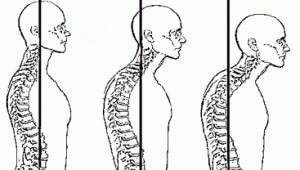Forward Head Posture and Breathing
The cliché “breath is life” is painfully accurate.
The access to, and nature of, our breath determines so much of the quality of our life.
If you stop breathing you die but if you breathe poorly you can suffer in many different ways.
Our general health is affected by our breath in the simplest terms by how much oxygen we intake.
Breathing at its most basic is a simple gaseous exchange. We take in oxygen and breathe out carbon dioxide.
Breathing well allows for the greatest intake of oxygen and the most efficient exchange of gases.
Stress levels are greatly influenced by our ability to breathe effectively. Our ability to relax is intimately connected to our ability to breathe fully.
Shallow breathing doesn’t allow for our nervous system to operate to its full capacity interfering with the balance between the sympathetic and parasympathetic nervous systems which control relaxation and excitation.
Forward head posture, the topic of this and many other posts, can reduce the capacity of the lungs to take in air. When the head moves forward it takes the cervical spine with it.
This forward shift of the upper spine interferes with the action of several muscles that facilitate breathing.
If the head is situated directly on top of the spine, its weight is transferred easily through the bones down through the body.
If the head moves even fractionally forward surrounding muscles will have to start working to hold the head up.
When the head moves forward, the scalene muscles in the neck begin to work too hard and their role in breathing (the lift of the upper ribs) is minimized.
Access to the diaphragm is then diminished and breathing becomes quite shallow reducing the amount of air getting to the lungs.
The rounding of the upper back that accompanies forward head posture usually compresses the cavity of the chest.
Again, our breathing capacity is greatly reduced by the distorted chest cavity which makes accessing the diaphragm much more difficult.
And many neck muscles can be thrown into disarray—some become short and tight (sub occipitals), some get too strong (scalenes).
The levator scapulae and the upper trapezius are recruited to do work for which they weren’t designed and the neck and upper back can suffer accordingly.
Muscles that are doing the work for another muscle can’t also do their own work, and the body will feel these effects in one way or another.
We can add the hyoid and sternocleidomastoid muscles as actors that are thrown off due to the forward thrust of the head.
***

